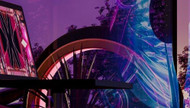3 Fragrance Technologies You Didn't Know Existed
Posted by MAIR on Jan 31st 2024
The fragrance industry, slowly but surely is going digital. In the last five years the industry has gone through remarkable advancements with the integration of cutting-edge technologies. Beyond the traditional methods of extracting scents and creating perfumes, a new era of fragrance technologies has emerged. Here are three fascinating fragrance technologies you might not be aware of.
Olfactory Virtual Reality (OVR):
Imagine being transported to a different world not just visually but also through scent. Olfactory Virtual Reality, or OVR, is a revolutionary technology that combines virtual reality with the sense of smell. By incorporating scent-emitting devices into VR experiences, users can now perceive and interact with a complete sensory environment . OVR utilizes a range of methods to deliver scents, including microencapsulation and direct scent diffusion.
Microencapsulation involves enclosing scent molecules in tiny capsules that burst when triggered, releasing the fragrance. This technology has found applications in various fields, from gaming and entertainment to therapeutic environments and even training simulations. The ability to immerse users in a multisensory experience adds a new dimension to virtual reality, making it a powerful tool for storytelling and engagement.
AI-Driven Fragrance Creation:
Artificial Intelligence (AI) has permeated numerous industries, and the fragrance world is no exception. We love how Microsoft has branded their AI solution as a copilot. It's not meant to replace the human but to assist the human. AI-driven fragrance creation does that for perfumers. It involves utilizing machine learning algorithms to analyze vast datasets of scent compounds, consumer preferences, and market trends.
This allows perfumers to optimize their formulations and create unique scents that resonate with specific target audiences. AI can predict which combinations of fragrance notes are likely to be well-received, speeding up the traditionally time-consuming process of perfume development. This technology not only aids in the creation of new scents but also in the customization of fragrances based on individual preferences. Brands can use AI to offer personalized fragrance experiences, ensuring that customers find scents that truly speak to them.
Scent Emitters in Smart Homes:
As our homes become smarter, so do our everyday experiences. Scent emitters integrated into smart home systems are gaining popularity as a way to enhance ambiance and well-being. These devices can release controlled bursts of fragrance based on programmed schedules, environmental conditions, or user preferences. Using sensors to detect factors like room temperature, humidity, or even the occupants' mood, smart scent emitters can create a tailored olfactory environment.
For example, a calming lavender scent might be released during the evening to promote relaxation, while a refreshing citrus aroma could greet you in the morning to energize your day. This technology goes beyond traditional air fresheners, contributing to a holistic and personalized home environment.
As technology continues to weave its way into various aspects of our lives, the fragrance industry is steadily embracing tech innovation with hesitant, open arms. Olfactory Virtual Reality, AI-driven fragrance creation, and smart home scent emitters represent just a glimpse into the future of digitally experiencing scents for consumers globally. These technologies not only offer new possibilities for immersive experiences but also challenge the conventional boundaries of how we perceive and interact with fragrances.

